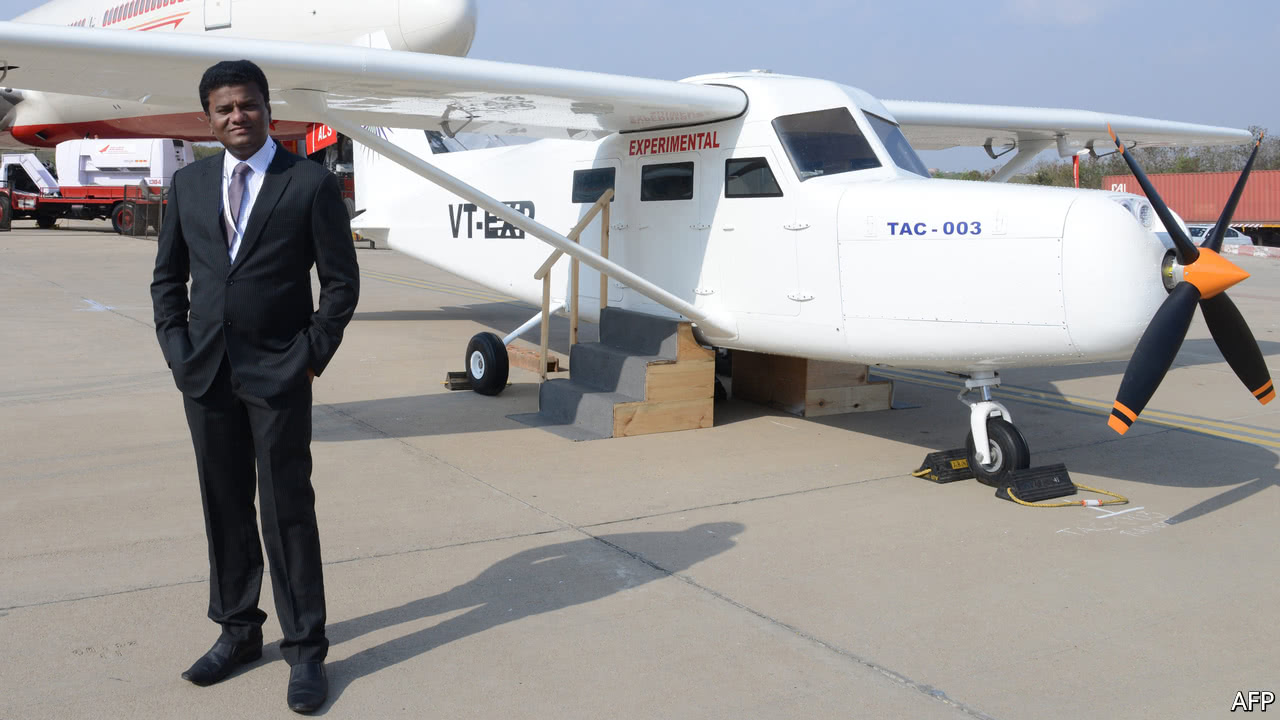
ALL great aviation ventures start with mavericks willing to defy both the laws of physics and the scepticism of their peers. William Boeing, Oleg Antonov and Howard Hughes are some of the best-known examples. Next, perhaps, is Amol Yadav, who for much of the past decade has been building aeroplanes on the roof of the Mumbai flat he shares with 18 family members, and battling the Indian authorities to let him fly them.
Admittedly, only experts would be able to distinguish the six-seater propeller plane (pictured) Mr Yadav has designed from scratch from a run-of-the-mill Cessna. But his plane is the only one in decades with wholly Indian credentials, he says. Much larger outfits have tried but struggled to get an indigenous craft certified for production, including National Aerospace Laboratories, one of several state-owned aviation mastodons.
-
The flow of Rohingya refugees into Bangladesh shows no sign of abating
-
A better way to search through scientific papers
-
Germany’s coalition talks begin
-
Not just another film about Jane Goodall
-
Private jets are getting cheaper
-
Retail sales, producer prices, wages and exchange rates
Self-identified visionaries are commonplace in business. But politicians have fallen over themselves to support Mr Yadav. His plane was the surprise star of a “Make in India” jamboree in 2016 to promote manufacturing in the country. The chief minister of Maharashtra, the state Mumbai is in, has promised not only government backing but land for Mr Yadav to develop and build his follow-up act, a 19-seater that is currently taking up space in his improvised domestic hangar. He has spent about 50m rupees ($800,000) of friends’ and family’s money to pursue his goal. Helping him is a staff of ten full-time aeroplane builders, assisted by a group of volunteers.
Even Narendra Modi, the prime minister, has been briefed on Mr Yadav’s rooftop activities, and directed officials to help him. But Indian bureaucrats are unmoved. The continued development of the 19-seater hinges on the smaller plane being certified as airworthy by the civil aviation authority. It has been so long since its officials have had to sign off on a new plane design that they seem to have forgotten how. Inspecting the six-seater plane had been on its to-do list since 2011. Mr Yadav complains that repeated rule changes have been designed to block him. Even entreaties from the prime minister’s office have failed to sway the regulator.
Having been hoisted off its rooftop hangar, the smaller plane is now languishing on the tarmac of Mumbai airport as if lashed to the ground by red tape. Whether Mr Yadav’s aircraft are airworthy is unproven. He says they are, and might know, given his day job as a captain for Jet Airways, a private airline. Mr Yadav wants America’s Federal Aviation Administration to certify his planes—he will soon apply to it—and India’s bureaucrats to accept its verdict.
Private backers want to invest in his budding aviation venture, Mr Yadav says, but that might alter its destiny as a future national champion. No aircraft-maker anywhere has thrived without state backing, he notes, usually through defence contracts. He also has blueprints for a fighter jet, development of which would cost half the $250m or so India pays to buy a single jet from Dassault, a French manufacturer—if only bureaucrats would grasp his vision, that is.
Source: economist
An Indian aviation visionary runs into bureaucratic turbulence